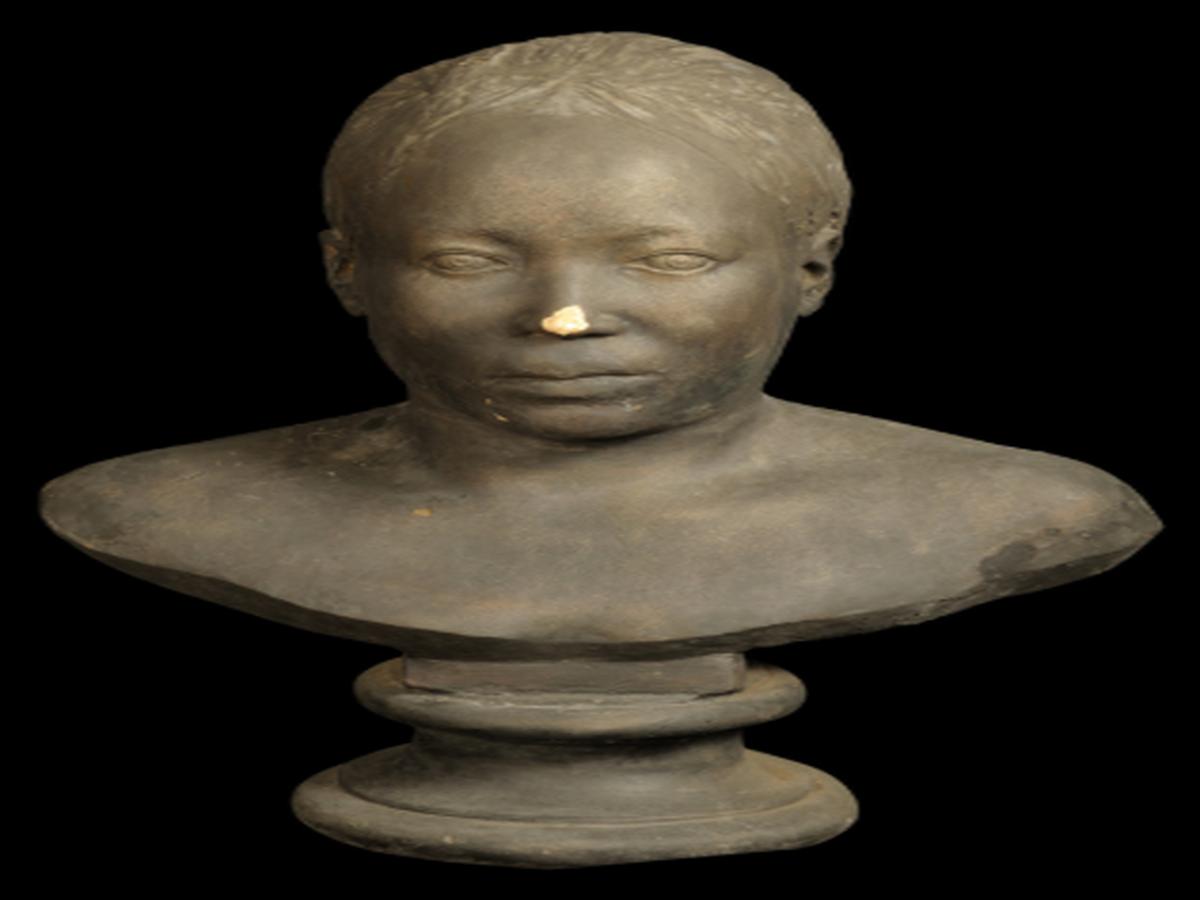State
Tribe Name
Art Type
short description
The plaster, which is simultaneously a sculptural image that draws into three-dimensionality, pertains to the Lepcha woman, perhaps the oldest surviving indigenous community of Sikkim. The Lepchas, also called "Rongkup," meaning children of the snowy peaks, are supposed to be the first settlers of Sikkim. In fact, the hills of Darjeeling and Kalimpong in West Bengal are also some claimed areas of theirs.This bust introduces to us the curious physiognomy of these people: flat face, nose slightly flat, small almond-shaped eyes, and thick lips. Hair is tied in the traditional scheme with the back plaited, as was the practice for most Lepcha women. The sculpture is mounted excellently on a circular pedestal and suitable for display and anthropological study.
Thumbnail

Filter Postion
Left
Filter Background
Off
Theme
Filter Header Image

content
Image

description
The plaster, which is simultaneously a sculptural image that draws into three-dimensionality, pertains to the Lepcha woman, perhaps the oldest surviving indigenous community of Sikkim. The Lepchas, also called "Rongkup," meaning children of the snowy peaks, are supposed to be the first settlers of Sikkim. In fact, the hills of Darjeeling and Kalimpong in West Bengal are also some claimed areas of theirs.This bust introduces to us the curious physiognomy of these people: flat face, nose slightly flat, small almond-shaped eyes, and thick lips. Hair is tied in the traditional scheme with the back plaited, as was the practice for most Lepcha women. The sculpture is mounted excellently on a circular pedestal and suitable for display and anthropological study.
They do share some semblance with nature- languages, culture, forests, animals- all speak for their experiences lived in utmost respect for nature. The Lepchas generally follow a weird mix of animism, Buddhism, and some indigenous faith which they practice. Such a Heritage is an important visual archive for tribal cultures in India; it can continue laying open the faint traces of indigenous ethnic identities and their self-perception, clothing, and aesthetic. Such ethnographic representations ought to be very helpful for understanding the cultural and anthropological richness of the northeastern hill communities of India.
They do share some semblance with nature- languages, culture, forests, animals- all speak for their experiences lived in utmost respect for nature. The Lepchas generally follow a weird mix of animism, Buddhism, and some indigenous faith which they practice. Such a Heritage is an important visual archive for tribal cultures in India; it can continue laying open the faint traces of indigenous ethnic identities and their self-perception, clothing, and aesthetic. Such ethnographic representations ought to be very helpful for understanding the cultural and anthropological richness of the northeastern hill communities of India.
Image Mode
landscape
promoted
On
Verified
Off
